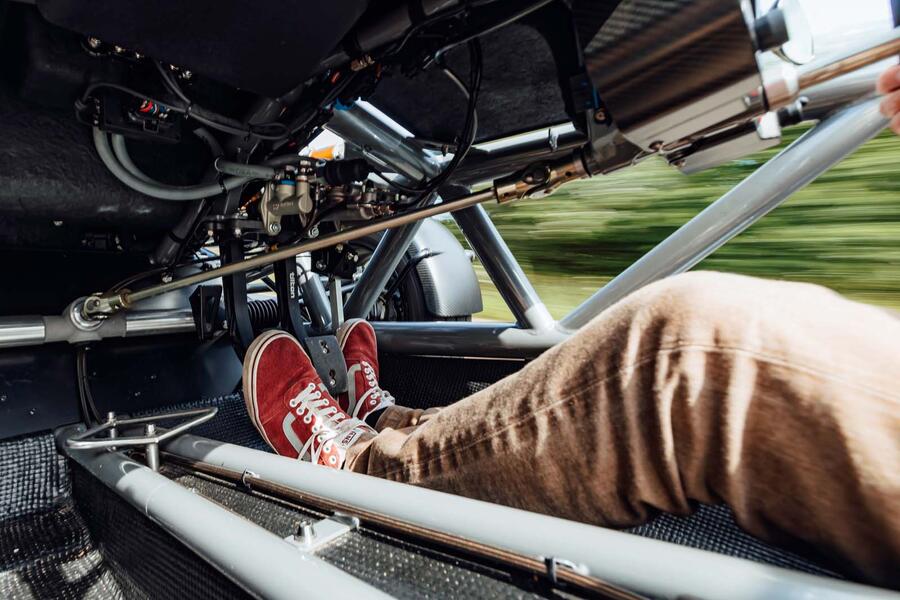But it’s absolutely Atomy. Or Atomish. Atomic, perhaps? The driving position is good, and the one-piece seat is more supportive than I remember, especially around the shoulders. But fire it up and get rolling and the experience is, if you had to describe it in a word, fizzy.
The Atom 1 had a 1.8-litre Rover K-series engine mounted directly to the chassis. And while it’s a good, lightweight, responsive engine, it’s a bit rorty and its every vibration directs back through the chassis and into these unpadded seats. Throttle response is light – actually the pedal is a bit too light and responsive – and, while you get back what you put in, you don’t have to put in very much to get it revving.
The ride is lively and connected, too. Bouncy is the wrong word, but there’s an alertness to the whole thing. The steering is quick – I don’t know if the ratio is actually any quicker than that of today’s car, but if anything it’s overly responsive off the straight-ahead.
Directional stability, especially once you throw in a bad road with some off-cambers and lumps, leaves something to be desired. The feeling, slightly, is one of being along for the ride. But overall it feels narrow, compact, smaller than today’s Atom, so you have some space in your lane you can play with.
With ‘only’ 118bhp an Atom 1 isn’t fast by today’s standards, but we’re still talking about a car with more than 200bhp per tonne, so it zips along quite briskly. Brisk enough for modern roads. The gearshift takes some precision: it’s short, quite heavy and narrowly spaced. But while it’s harder to drive than I remember the more modern Atoms being, there’s a real innocence about its enthusiasm.
